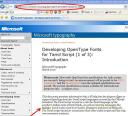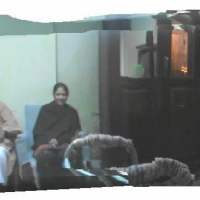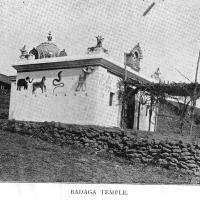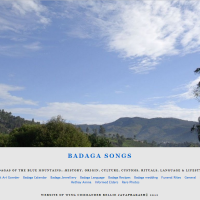The Creative Shop (Creative Alliance for Nilgiris- CAN)
 Dharmalingam Venugopal [Honorary Director, Nilgiri Documentation Centre, Kotagiri, The Nilgiris, Cell #9444365360] writes : I have great pleasure in welcoming you to the opening of The Creative Shop at Kotagiri, The Nilgiris on Oct 1, 2014 A note on what The Creative Shop is all about follows. You are aware that Financial Inclusion is being implemented in the country with great vigor and vitality both by the previous Congress government and the present Modiji’s government. Mountainous regions of the country pose special challenges to inclusion because of their terrain, communication and transport difficulties and tribal or indigenous nature of their population. In 2012, while working as the Economist of Indian Overseas Bank, I suggested to my good and respected friend, the then Deputy Governor of Reserve Bank of India, Dr. K.C.Chakrabarty, who was spearheading the financial inclusion movement in the country, that I would try a pilot experiment in the Nilgiris among the Todas. He readily agreed and Dr. M.Narendra, the Chairman and Managing Director of Indian Overseas Bank was only too eager to join. Normally, the lead bank of the district, Canara Bank in the case of Nilgiris, should take the lead. But an exception was made in my case. When some reporters asked why restrict the project to just one tribe, Dr. Narendra promptly extended the project to all the Primitive Tribes of Nilgiris. When, later, Dr. Chakrabarty came to inaugurate the project, he was so impressed with the project that he announced an exclusive Rural Self Employment and Training Institute (Rseti) for the Primitive Tribes of Nilgiris to be set up at Kotagiri by Indian Overseas Bank. Normally, the Lead Bank of the district runs such institutes at the district headquarters, Ooty in this case. The Nilgiris is, perhaps, the only case where there are two such institutes. Under the Financial Inclusion of the Primitive Tribes of Nilgiris, more than Rs.4 crores loans have been given. Seven Banking Correspondents, mostly tribals, have been appointed. In the last two years, the Kotagiri Rseti run by Indian Overseas Bank has trained a number of candidates in a variety of self-employment opportunities. Then, a question was asked. How will these trainees, mostly women, be able to market their products viably? We then came up with the idea of forming a Creative Alliance for Nilgiris (CAN) to impart confidence to the trainees that anybody ‘CAN’ do it. The Creative Shop is the first initiative under CAN. The Creative Shop will promote all kinds of local products and services. It will also bring creative products from all over India so that local producers can learn how creative products are made in other parts of country. To start with we have ordered all racks from the Lantana Furniture produced by the Eco-development and Sustainable Livelihood Society at Moyar. We hope to leverage the extensive network of the branches of Indian Overseas Bank through interested employees and retirees to identify creative products in different parts of the country. They will also be encouraged to launch similar Creative Shops so that eventually there can be network of such shops promoting the products produced by the trainees of Rsetis throughout the country. For details contact scindiababu@gmail.com or 9487071793
Dharmalingam Venugopal [Honorary Director, Nilgiri Documentation Centre, Kotagiri, The Nilgiris, Cell #9444365360] writes : I have great pleasure in welcoming you to the opening of The Creative Shop at Kotagiri, The Nilgiris on Oct 1, 2014 A note on what The Creative Shop is all about follows. You are aware that Financial Inclusion is being implemented in the country with great vigor and vitality both by the previous Congress government and the present Modiji’s government. Mountainous regions of the country pose special challenges to inclusion because of their terrain, communication and transport difficulties and tribal or indigenous nature of their population. In 2012, while working as the Economist of Indian Overseas Bank, I suggested to my good and respected friend, the then Deputy Governor of Reserve Bank of India, Dr. K.C.Chakrabarty, who was spearheading the financial inclusion movement in the country, that I would try a pilot experiment in the Nilgiris among the Todas. He readily agreed and Dr. M.Narendra, the Chairman and Managing Director of Indian Overseas Bank was only too eager to join. Normally, the lead bank of the district, Canara Bank in the case of Nilgiris, should take the lead. But an exception was made in my case. When some reporters asked why restrict the project to just one tribe, Dr. Narendra promptly extended the project to all the Primitive Tribes of Nilgiris. When, later, Dr. Chakrabarty came to inaugurate the project, he was so impressed with the project that he announced an exclusive Rural Self Employment and Training Institute (Rseti) for the Primitive Tribes of Nilgiris to be set up at Kotagiri by Indian Overseas Bank. Normally, the Lead Bank of the district runs such institutes at the district headquarters, Ooty in this case. The Nilgiris is, perhaps, the only case where there are two such institutes. Under the Financial Inclusion of the Primitive Tribes of Nilgiris, more than Rs.4 crores loans have been given. Seven Banking Correspondents, mostly tribals, have been appointed. In the last two years, the Kotagiri Rseti run by Indian Overseas Bank has trained a number of candidates in a variety of self-employment opportunities. Then, a question was asked. How will these trainees, mostly women, be able to market their products viably? We then came up with the idea of forming a Creative Alliance for Nilgiris (CAN) to impart confidence to the trainees that anybody ‘CAN’ do it. The Creative Shop is the first initiative under CAN. The Creative Shop will promote all kinds of local products and services. It will also bring creative products from all over India so that local producers can learn how creative products are made in other parts of country. To start with we have ordered all racks from the Lantana Furniture produced by the Eco-development and Sustainable Livelihood Society at Moyar. We hope to leverage the extensive network of the branches of Indian Overseas Bank through interested employees and retirees to identify creative products in different parts of the country. They will also be encouraged to launch similar Creative Shops so that eventually there can be network of such shops promoting the products produced by the trainees of Rsetis throughout the country. For details contact scindiababu@gmail.com or 9487071793
We appeal : To the Press and Media for extensive publicity to our endeavour. To the Corporates and Banks to consider supporting us through their Corporate Social Responsibility To the Government and administration to support us through any of the social development projects. To the IOBians, past and present, to support this sincere initiative.
 Dharmalingam Venugopal is a great and committed Badaga who ‘looks beyond what you see’. His tireless efforts to make Nilgiri Documentation Centre a source of information have brought laurels from all over the globe and has become a ‘must see’ for the informed tourists. I take great pleasure in wishing him the very best in his new endevour and have no doubts that ‘CAN’ will be a great success. Yes, we CAN – Wg Cdr JP
Dharmalingam Venugopal is a great and committed Badaga who ‘looks beyond what you see’. His tireless efforts to make Nilgiri Documentation Centre a source of information have brought laurels from all over the globe and has become a ‘must see’ for the informed tourists. I take great pleasure in wishing him the very best in his new endevour and have no doubts that ‘CAN’ will be a great success. Yes, we CAN – Wg Cdr JP


























 Mookuthi
Mookuthi  Chinna
Chinna 






 ==
==



![Seemae [See'may] & Morae [Mo'ray] (relationship)](https://i0.wp.com/badaga.wordpress.com/files/2008/11/nakku-betta1.jpg?resize=200%2C200)








































